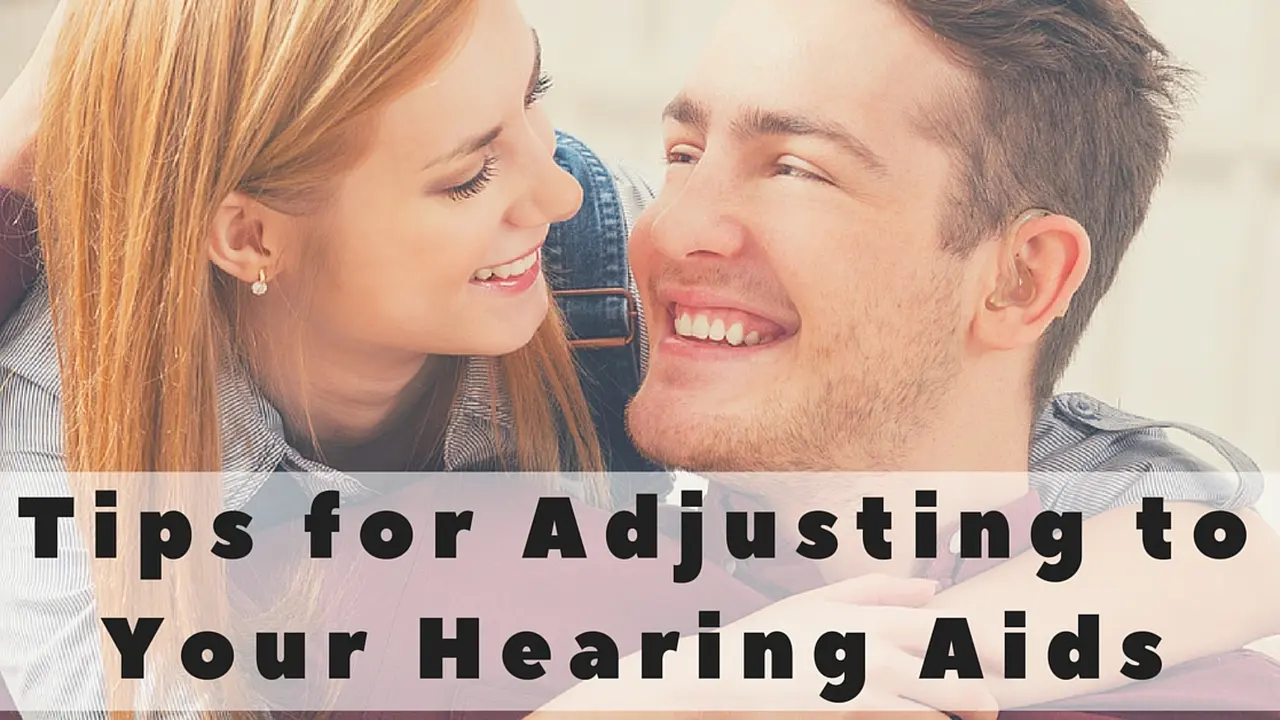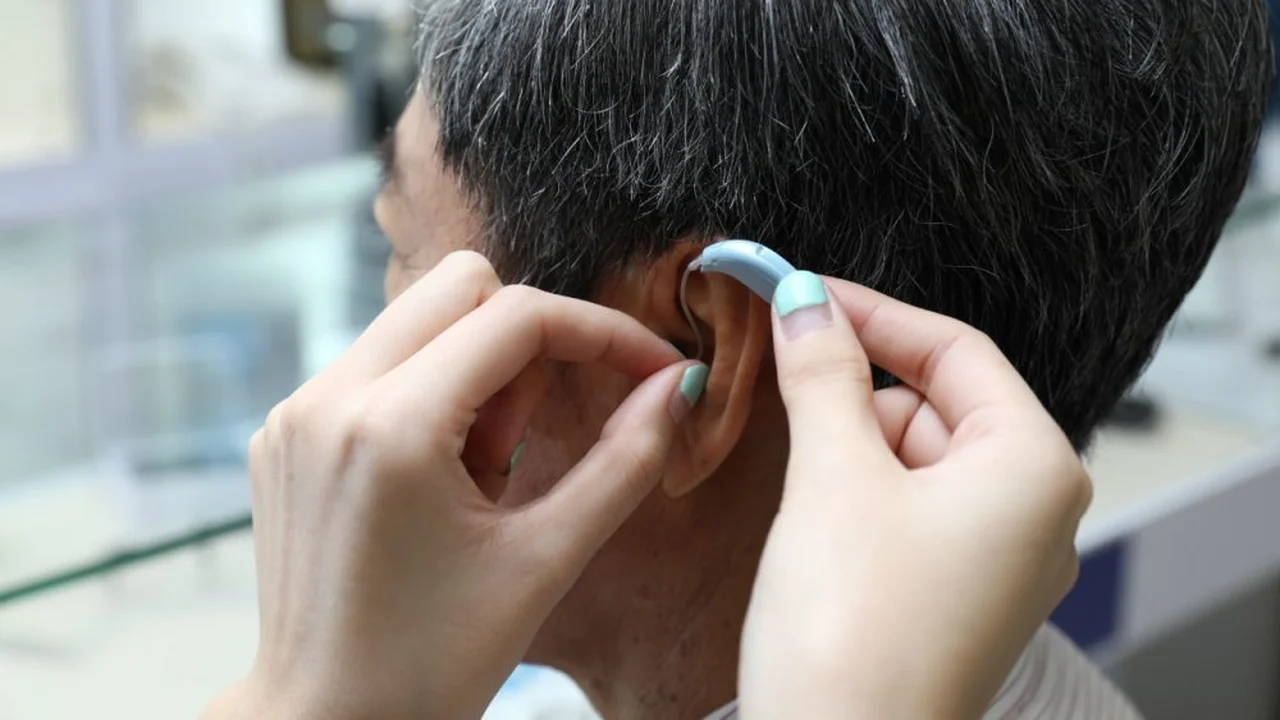Adjusting To Your New Hearing Aids Tips
Learn essential tips for adjusting to new hearing aids. Understand the adaptation period and how to maximize comfort and sound quality.

Adjusting To Your New Hearing Aids Tips
Learn essential tips for adjusting to new hearing aids. Understand the adaptation period and how to maximize comfort and sound quality.So, you've just gotten your new hearing aids. Congratulations! This is a huge step towards improving your hearing and overall quality of life. But let's be real, it's not always an instant fix. Think of it like getting new glasses – your brain needs a little time to adjust to the new way of seeing things. The same goes for hearing aids. Your brain has been working overtime, or perhaps under-stimulated, for a while, and now it's getting a whole new world of sound. This adjustment period is totally normal, and with a bit of patience and these handy tips, you'll be hearing like a pro in no time.
Understanding the Hearing Aid Adaptation Period
The first thing to understand is that adaptation is a process, not an event. It's not like flipping a switch. Your brain needs to relearn how to interpret sounds it might have forgotten or never heard clearly before. This can sometimes feel overwhelming at first. You might notice sounds you haven't heard in years – the hum of your refrigerator, the rustle of leaves, or even your own footsteps. While exciting, this can also be a bit tiring. Your audiologist will likely have explained this, but it bears repeating: be patient with yourself. Most people find the initial adjustment takes a few weeks, but full adaptation can take several months.
Why Does My Brain Need to Adjust to Hearing Aids
For a long time, your brain has been compensating for your hearing loss. It might have been filling in gaps, ignoring certain frequencies, or working harder to understand speech. When you put on hearing aids, your brain suddenly receives a richer, more complete soundscape. It needs to learn to filter out background noise again, focus on important sounds, and re-establish neural pathways for clear hearing. This 're-training' is crucial for long-term success and satisfaction with your devices.
Initial Steps for Hearing Aid Success
Let's dive into some practical steps you can take right from day one to make this transition smoother.
Start Slow and Gradually Increase Wearing Time for Hearing Aids
Don't try to wear your hearing aids all day, every day, right off the bat. Start with a few hours a day in quiet environments. Maybe wear them during your morning coffee, while reading, or watching TV at a moderate volume. As you get more comfortable, gradually increase your wearing time. Add an hour or two each day, and slowly introduce them to slightly noisier environments. This gentle approach prevents sensory overload and allows your brain to adapt at its own pace.
Practice Listening in Quiet Environments with Your New Hearing Aids
Your home is your best friend during the initial adjustment phase. Spend time listening to everyday sounds in a quiet setting. Pay attention to the subtle noises you might have missed before. Talk to family members one-on-one. Listen to the TV or radio at a comfortable volume. This helps your brain get used to the new sound input without the added challenge of background noise.
Engage in One-on-One Conversations with Hearing Aids
One of the primary reasons for getting hearing aids is to improve communication. Start with one-on-one conversations in quiet settings. This allows you to focus on speech without distractions. Ask your conversation partner to speak clearly and at a normal pace. Don't be afraid to ask them to repeat themselves if you didn't quite catch something. This is part of the learning process for both you and your communication partners.
Maximizing Comfort and Sound Quality with Hearing Aids
Comfort and sound quality are key to long-term hearing aid use. Here's how to get the most out of your devices.
Regularly Clean and Maintain Your Hearing Aids
Just like any electronic device, hearing aids need regular cleaning and maintenance. Earwax, moisture, and debris can clog microphones and receivers, affecting sound quality and even causing feedback. Your audiologist will show you how to clean them, but generally, this involves wiping them down daily with a soft, dry cloth, and using a small brush or wax pick to clear any blockages. For Behind-The-Ear (BTE) and Receiver-In-Canal (RIC) models, regularly check and clean the ear molds or domes. Proper maintenance ensures your hearing aids perform their best and last longer.
Attend Follow-Up Appointments with Your Audiologist
Those follow-up appointments aren't just for show! They are crucial for fine-tuning your hearing aids. Your audiologist will make adjustments based on your feedback and experiences. Don't hesitate to tell them about any discomfort, sounds that are too loud or too soft, or specific listening situations where you're struggling. These adjustments are vital for optimizing your hearing aids to your unique needs and preferences. Think of it as tailoring a suit – it needs to fit you perfectly.
Be Patient and Persistent with Your Hearing Aids
This is probably the most important tip. There will be days when you feel frustrated, when sounds seem too loud, or when you still struggle in certain situations. That's okay! Don't give up. Consistency is key. The more you wear your hearing aids, the faster your brain will adapt. Remember why you got them in the first place – to reconnect with the world of sound. Keep a positive attitude and celebrate small victories.
Troubleshooting Common Hearing Aid Issues
Even with the best preparation, you might encounter some common issues. Knowing how to address them can save you a trip to the audiologist and keep you hearing clearly.
Dealing with Hearing Aid Feedback or Whistling
Feedback, that annoying whistling sound, is a common complaint. It usually happens when amplified sound leaks out of your ear and gets picked up by the hearing aid's microphone, creating a loop. Here's what to check:
- Improper Fit: Your ear mold or dome might not be seated correctly in your ear. Try reinserting it. If it still feels loose or uncomfortable, it might be time for a new mold or a different size dome.
- Earwax Buildup: Excess earwax can block the sound from reaching your eardrum, causing it to bounce back and create feedback. Clean your ears regularly (or have a professional do it) and ensure your hearing aid is free of wax.
- Volume Too High: Sometimes, the volume might simply be too high for your environment. Try lowering it slightly.
- Cracked Tubing (BTE models): For BTE hearing aids, check the tubing for any cracks or damage. Damaged tubing can cause sound leakage.
My Hearing Aids Sound Too Loud or Too Soft
This is a common issue during the adjustment phase. If sounds are too loud, your brain might be overstimulated. If they're too soft, you might not be getting enough amplification. This is where your audiologist comes in. They can adjust the gain settings for different frequencies to ensure sounds are at a comfortable and effective level for you. In the meantime, try using the volume control on your hearing aids or smartphone app if available.
Difficulty Hearing in Noisy Environments with Hearing Aids
Hearing in noisy environments is often the biggest challenge for hearing aid users, even experienced ones. Modern hearing aids have advanced features like noise reduction and directional microphones to help, but they aren't magic. Here are some tips:
- Use Specific Programs: Many hearing aids have different programs for various listening environments (e.g., 'restaurant mode,' 'music mode'). Learn how to switch between them.
- Position Yourself Strategically: Try to sit with your back to the noise source, or in a quieter corner of a room. Face the person you're speaking to directly.
- Focus on One Speaker: Try to concentrate on one voice at a time. It takes practice, but your brain will get better at filtering.
- Communicate Your Needs: Don't be afraid to tell friends or family that you're struggling in a noisy place. They can help by speaking clearly or moving to a quieter spot.
Recommended Hearing Aid Products for Different Needs
To help you navigate the vast market, let's look at some specific hearing aid models that are highly regarded for their features, performance, and user experience. Remember, the 'best' hearing aid is always the one that best suits your individual hearing loss, lifestyle, and budget, so these are just starting points for discussion with your audiologist.
For Discreet Wear and Mild to Moderate Hearing Loss: Phonak Virto Paradise P-Titanium
If discretion is your top priority, the Phonak Virto Paradise P-Titanium is a fantastic choice. These are custom-made, In-The-Canal (ITC) or Completely-In-Canal (CIC) hearing aids, crafted from medical-grade titanium. This material allows for incredibly thin shells, making them up to 26% smaller than traditional acrylic custom hearing aids. They are virtually invisible when worn, fitting deep within the ear canal.
Key Features and Benefits of Phonak Virto Paradise P-Titanium
- Ultra-Discreet Design: Their small size and deep fit make them almost undetectable.
- Custom Fit: Each device is custom-molded to your ear canal for optimal comfort and sound delivery.
- Titanium Shell: Durable, lightweight, and hypoallergenic.
- AutoSense OS 4.0: Automatically adapts to different listening environments, providing clear sound.
- Limited Connectivity: Due to their small size, they typically don't offer Bluetooth streaming or rechargeable options. They use disposable batteries (size 10).
Ideal Usage Scenarios for Virto Paradise P-Titanium
Perfect for individuals with mild to moderate hearing loss who prioritize aesthetics and a natural listening experience. Great for professionals, social events, and everyday use where you want your hearing aids to go unnoticed.
Estimated Price Range for Virto Paradise P-Titanium
Expect to pay between $2,500 - $4,000 per hearing aid, depending on the technology level and provider.
For Rechargeability and Advanced Connectivity: Oticon More
The Oticon More is a popular choice for those seeking advanced technology, excellent sound quality, and the convenience of rechargeability. These are Receiver-In-Canal (RIC) style hearing aids, known for their open fit and natural sound. Oticon's 'MoreSound Intelligence' and 'Deep Neural Network' (DNN) technology are designed to give your brain access to all relevant sounds, not just speech, for a more complete soundscape.
Key Features and Benefits of Oticon More
- Rechargeable: Offers a full day of power with a single charge, including streaming. Comes with a sleek charging case.
- BrainHearing Technology: Powered by a Deep Neural Network (DNN) trained with 12 million real-life sound scenes, it processes sound more like the brain.
- Bluetooth Connectivity: Direct streaming from iPhone and select Android devices for calls, music, and podcasts.
- ConnectClip Accessory: Can be used as a remote microphone for challenging listening situations.
- Telecoil Option: Available in some models for improved listening in looped environments.
Ideal Usage Scenarios for Oticon More
Excellent for active individuals, those who frequently use their phone for calls or streaming, and anyone who wants a rich, detailed sound experience across various environments. Suitable for mild to severe hearing loss.
Estimated Price Range for Oticon More
Prices typically range from $2,800 - $4,500 per hearing aid, depending on the technology level and included services.
For Severe to Profound Hearing Loss and Robust Power: Phonak Naída Paradise
When significant power and robust features are needed, the Phonak Naída Paradise is a top contender. These are Behind-The-Ear (BTE) hearing aids, designed to provide powerful amplification for severe to profound hearing loss. They combine Phonak's Paradise sound processing with a durable, power-packed design.
Key Features and Benefits of Phonak Naída Paradise
- Powerful Amplification: Specifically engineered to deliver clear, rich sound for individuals with significant hearing loss.
- Rechargeable Option: Available in a rechargeable model for convenience.
- Universal Bluetooth Connectivity: Connects directly to virtually any Bluetooth-enabled device, including smartphones, tablets, and computers.
- Tap Control: Answer calls, pause/resume streaming, and activate voice assistants with a simple tap to the ear.
- Motion Sensor Hearing: Detects if you are moving and adjusts microphones to optimize speech understanding.
Ideal Usage Scenarios for Phonak Naída Paradise
Best suited for individuals with severe to profound hearing loss who require maximum power and clarity. Also great for those who want seamless connectivity with their digital devices and robust features for challenging listening situations.
Estimated Price Range for Phonak Naída Paradise
Expect to pay between $2,700 - $4,300 per hearing aid, varying with technology level and provider.
For Over-The-Counter (OTC) Convenience and Mild to Moderate Loss: Jabra Enhance Plus
For those with perceived mild to moderate hearing loss who are looking for an accessible, self-fitting option, the Jabra Enhance Plus offers a compelling solution. These are small, earbud-style devices that combine the functionality of hearing aids with premium earbuds. They are designed to be purchased directly by consumers without a prescription or professional fitting.
Key Features and Benefits of Jabra Enhance Plus
- OTC Accessibility: No prescription or audiologist visit required for purchase.
- Hybrid Design: Functions as both a hearing enhancer and wireless earbuds for music and calls.
- Self-Fitting App: Uses a smartphone app to personalize settings based on your hearing profile.
- Rechargeable: Offers up to 10 hours of battery life on a single charge, with a portable charging case.
- Discreet and Comfortable: Small, lightweight design that fits snugly in the ear.
Ideal Usage Scenarios for Jabra Enhance Plus
Great for individuals experiencing early signs of hearing loss, those who want to try hearing amplification without the commitment of traditional hearing aids, or people who want a dual-purpose device for both hearing enhancement and audio streaming. Best for mild to moderate hearing loss.
Estimated Price Range for Jabra Enhance Plus
Typically priced around $799 - $899 per pair, making them a more budget-friendly entry point.
For Value and Essential Features: Lexie B2 Powered by Bose
Another strong contender in the OTC market, the Lexie B2 Powered by Bose offers a balance of affordability and quality sound. These are Receiver-In-Canal (RIC) style OTC hearing aids, designed for self-fitting and management via a smartphone app. Bose's audio expertise is leveraged to provide clear sound.
Key Features and Benefits of Lexie B2 Powered by Bose
- Bose Sound Quality: Benefits from Bose's renowned audio engineering for clear and natural sound.
- Self-Tuning App: The Lexie app guides users through a simple setup process to personalize their hearing experience.
- Rechargeable: Provides up to 18 hours of use on a single charge.
- Directional Microphones: Helps to focus on speech in noisy environments.
- Telehealth Support: Offers remote support from Lexie hearing experts.
Ideal Usage Scenarios for Lexie B2 Powered by Bose
Suitable for adults with perceived mild to moderate hearing loss who are comfortable with technology and prefer a self-managed solution. A good option for those seeking a balance between performance and cost-effectiveness in the OTC category.
Estimated Price Range for Lexie B2 Powered by Bose
Priced around $999 - $1,099 per pair, offering good value for an OTC rechargeable RIC device.
Comparing Different Hearing Aid Types and Their Suitability
Let's quickly compare the general types of hearing aids and who they might be best for, keeping in mind the specific models we just discussed.
Behind-The-Ear BTE Hearing Aids Comparison
BTE hearing aids, like the Phonak Naída Paradise, sit behind the ear with a tube connecting to an earmold or dome in the ear canal. They are generally the largest type but also the most powerful and durable. They can accommodate larger batteries (including rechargeable ones) and more features. They are often recommended for severe to profound hearing loss, children (due to their durability and ease of cleaning), and those who need maximum amplification.
Receiver-In-Canal RIC Hearing Aids Comparison
RIC hearing aids, such as the Oticon More and Lexie B2, are very popular. They are similar to BTEs but smaller, with the receiver (speaker) placed directly in the ear canal, connected by a thin wire. This design allows for a more open fit, reducing the feeling of being plugged up. They are suitable for mild to severe hearing loss and offer a good balance of discretion, features, and sound quality. Many rechargeable and Bluetooth-enabled models are RICs.
In-The-Ear ITE and In-The-Canal ITC Hearing Aids Comparison
ITE and ITC hearing aids are custom-made to fit partially or fully within the outer ear or ear canal. The Phonak Virto Paradise P-Titanium falls into this category. They offer good discretion but are generally less powerful than BTEs or RICs and may have fewer features due to their smaller size. They are best for mild to moderate hearing loss and those who prioritize aesthetics.
Completely-In-Canal CIC and Invisible-In-Canal IIC Hearing Aids Comparison
These are the smallest and most discreet custom hearing aids, fitting deep within the ear canal, making them virtually invisible. The Virto Paradise P-Titanium can be made in these styles. While offering maximum discretion, their small size means they use tiny batteries (often size 10), have limited features (no Bluetooth, no rechargeability), and are not suitable for severe hearing loss. They are ideal for mild to moderate hearing loss where invisibility is paramount.
Over-The-Counter OTC Hearing Aids Comparison
OTC hearing aids, like the Jabra Enhance Plus and Lexie B2, are a newer category. They are designed for adults with perceived mild to moderate hearing loss and can be purchased directly without a prescription. They offer convenience and a lower price point but typically don't offer the same level of customization or professional support as prescription devices. They are a good entry point for those exploring amplification.
Final Thoughts on Your Hearing Aid Journey
Remember, getting hearing aids is a journey, not a destination. There will be ups and downs, but the benefits of improved hearing are immense. Stick with it, communicate openly with your audiologist, and celebrate every step forward. You're on your way to a richer, more connected world of sound!
:max_bytes(150000):strip_icc()/277019-baked-pork-chops-with-cream-of-mushroom-soup-DDMFS-beauty-4x3-BG-7505-5762b731cf30447d9cbbbbbf387beafa.jpg)





